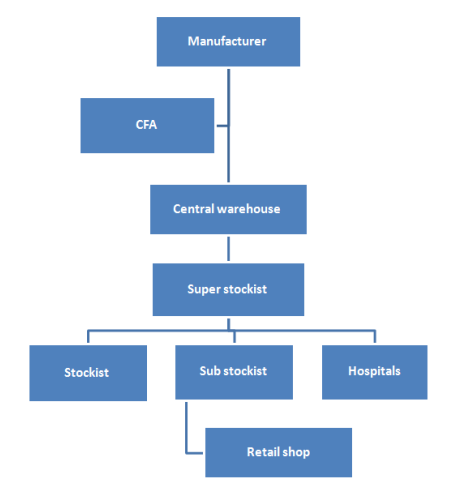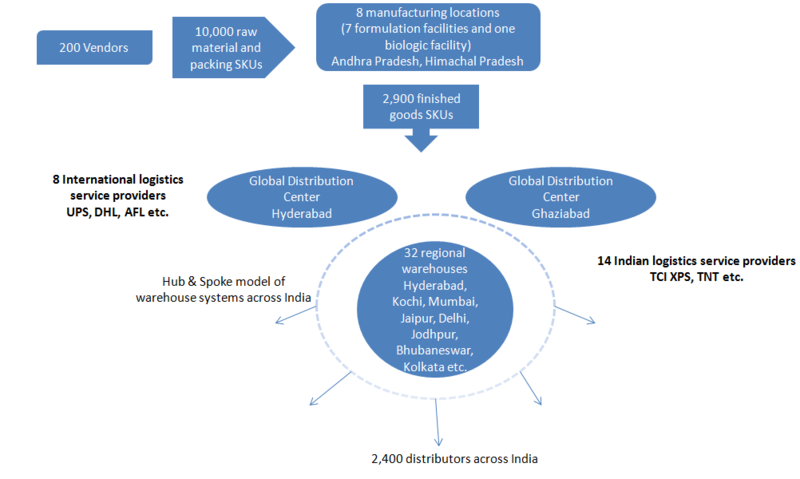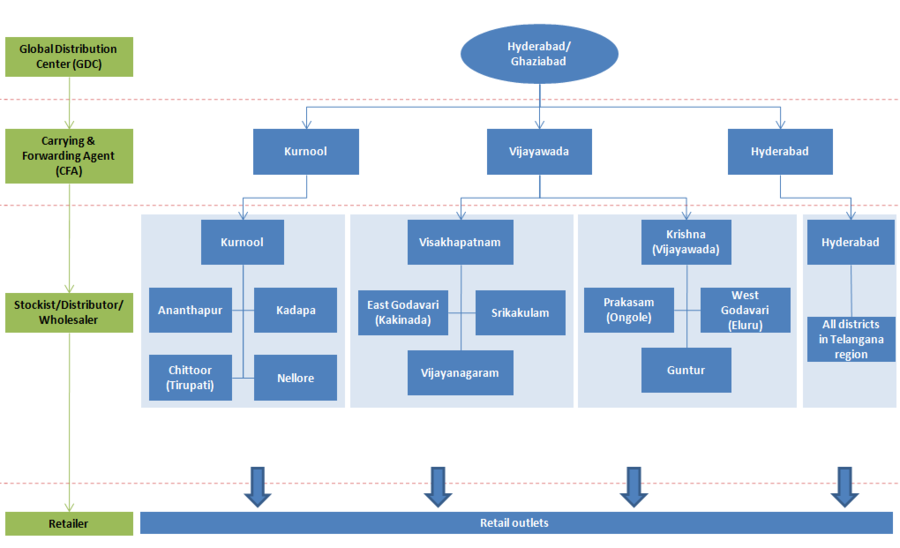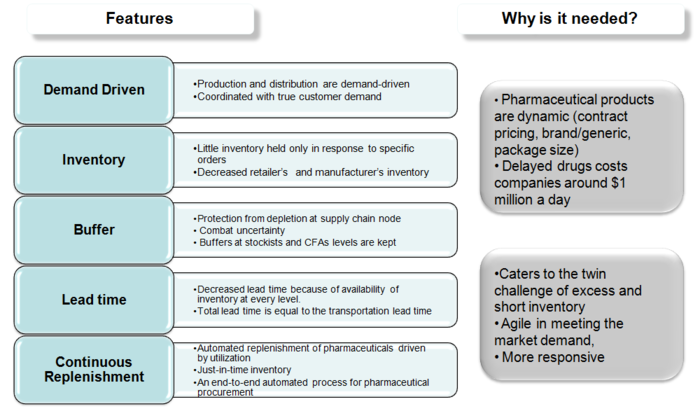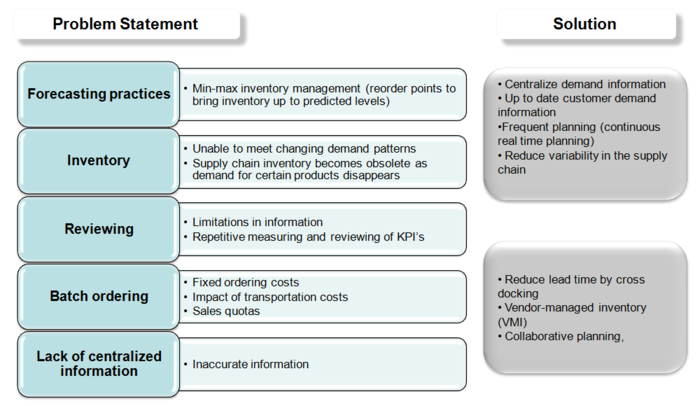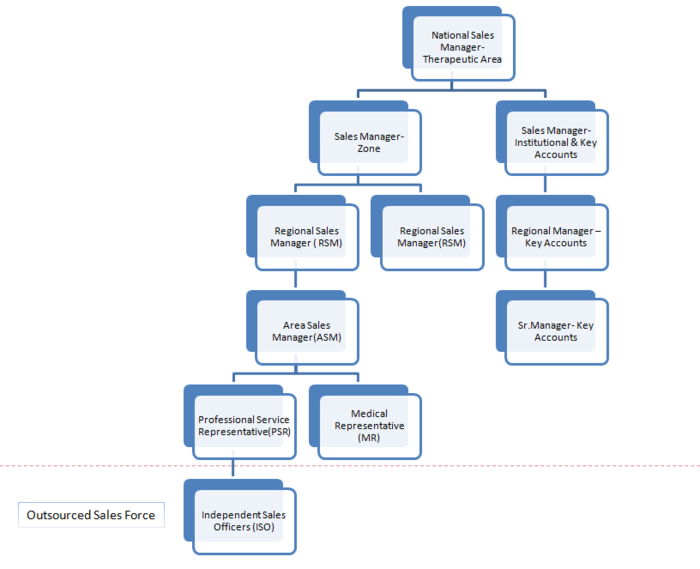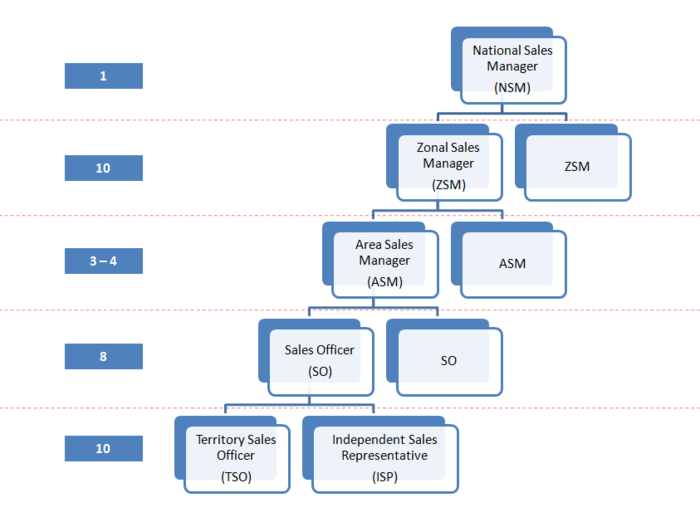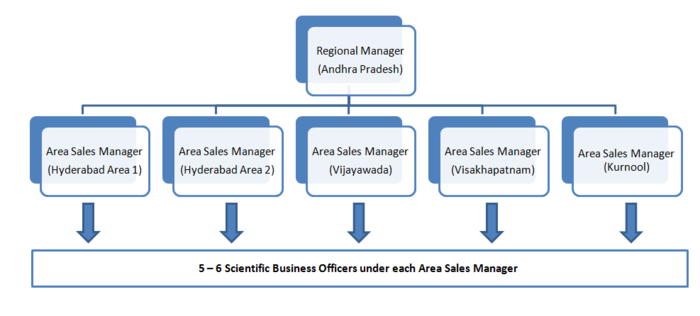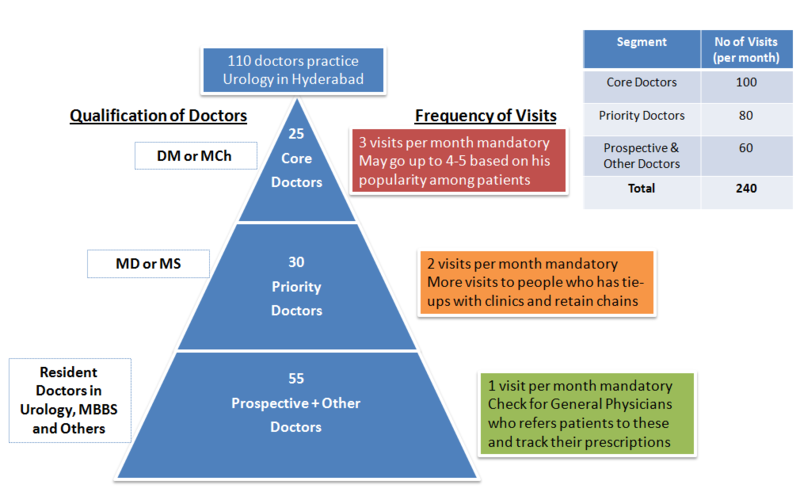Difference between revisions of "Indian Pharma Industry - Distribution & Sales Force Structure"
| Line 28: | Line 28: | ||
===Examples of Distribution Structure=== | ===Examples of Distribution Structure=== | ||
| − | ==== | + | ====ABC Company Supply Chain & Distribution in India==== |
| − | ===== | + | =====ABC Company Supply Chain Model===== |
| − | + | ABC Company has a replenishment mode of supply chain currently. It made a switch from forecast based supply chain 3 years ago. | |
=====Replenishment-based Supply Chain===== | =====Replenishment-based Supply Chain===== | ||
| Line 45: | Line 45: | ||
[[Image:DRL Supply chain in India1.png|center|800px]] | [[Image:DRL Supply chain in India1.png|center|800px]] | ||
| − | *All the 32 regional warehouses of | + | *All the 32 regional warehouses of ABC Company are through CFAs |
*Ranbaxy Laboratories Limited has 28 CFAs across the country | *Ranbaxy Laboratories Limited has 28 CFAs across the country | ||
*Distributors are known as stockists in the industry | *Distributors are known as stockists in the industry | ||
| − | ====Distribution in Andhra Pradesh State- | + | ====Distribution in Andhra Pradesh State- ABC Company==== |
[[Image:AP Distribution-DRL.png|center|900px]] | [[Image:AP Distribution-DRL.png|center|900px]] | ||
| − | ====Distribution in Andhra Pradesh State- | + | ====Distribution in Andhra Pradesh State- AAA Company==== |
[[Image:AP Distribution-Piramal.png|center|800px]] | [[Image:AP Distribution-Piramal.png|center|800px]] | ||
| Line 114: | Line 114: | ||
| − | ==== | + | ====ABC Company OTC Drugs-Sales Force Structure in India==== |
[[Image:DRL OTC Sales Force2.png|center|700px]] | [[Image:DRL OTC Sales Force2.png|center|700px]] | ||
| Line 121: | Line 121: | ||
*Since it is not cost efficient to maintain such a large sales force on roles and the products are from OTC, companies hire independent sales representatives at the territory level. | *Since it is not cost efficient to maintain such a large sales force on roles and the products are from OTC, companies hire independent sales representatives at the territory level. | ||
| − | ==== | + | ====ABC Company Prescription Drugs-Sales Force Structure in AP State==== |
[[Image:DRL Rx Sales Force1.png|center|700px]] | [[Image:DRL Rx Sales Force1.png|center|700px]] | ||
| − | * | + | *ABC Company has 16 divisions based on therapeutic area and the sales force structure is common for most of the prescription drugs |
Revision as of 04:48, 1 February 2012
Contents
Research Objective
To understand the Indian pharmaceutical distribution and the sales force structure through primary research.
Overview
Indian pharmaceutical industry is on a strong growth path with the total value of Indian Pharma industry expected to reach almost $50 Billion by 2015-2016. Out of this close to 22 billion is expected to originate from the domestic formulation business. A key issue faced by the industry is management of the supply chain. Supply chain in India is highly fragmented with more than 550,000 retail pharmacies in the country. According to a report by bioplan Associates, though the number of distributors have increased by 4 fold in the last three decades, from 125,000 in 1978, the volume of prescriptions distributed have not increased proportionally. Hence it is evident that though there is a growth in the number of distributors and retail pharmacies, distribution is not very efficient. Also the rural markets remain highly untapped.
Pharmaceutical Distribution
Drug distribution in India has witnessed a paradigm shift. Before 1990, pharmaceutical companies established their own depots and warehouses. Now they have been replaced by clearing and forwarding agents (CFAs).
- CFAs: These organizations are primarily responsible for maintaining storage (stock) of the company’s products and forwarding SKUs to the stockist on request. Most companies keep 1–3 CFAs in each Indian state. On an average, a company may work with a total of 25–35 CFAs. The CFAs are paid by the company yearly, once or twice, on a basis of the percentage of total turnover of products.
- Stockist: is the distributor, who can simultaneously handle more than one company (usually, 5–15 depending on the city area), and may go up to even 30–50 different manufacturers. They pay for the products directly in the name of the pharmaceutical company after 30 to 45 days.
- The retail pharmacy obtains products from the stockist or substockist through whom it finally reaches the consumers (patients).
Typical Supply Chain Structure
Examples of Distribution Structure
ABC Company Supply Chain & Distribution in India
ABC Company Supply Chain Model
ABC Company has a replenishment mode of supply chain currently. It made a switch from forecast based supply chain 3 years ago.
Replenishment-based Supply Chain
Recording of what has been consumed at various supply chain nodes and replenishing it at the front end by the previous supply chain node. It is an end-to-end solution involving the front end distribution system, operations and procurement as well. It enables the company to be more agile in meeting market demands and helps to meet the two major challenges: Excess Inventory & Shortages in system
Teva Pharma, a major generic pharma company based out of Israel follows the replenishment based system.
- All the 32 regional warehouses of ABC Company are through CFAs
- Ranbaxy Laboratories Limited has 28 CFAs across the country
- Distributors are known as stockists in the industry
Distribution in Andhra Pradesh State- ABC Company
Distribution in Andhra Pradesh State- AAA Company
Margin Structure in Distribution
- Margins are represented as % on the MRP (Maximum Retail Price)
- A sample cost structure is shown for a product with MRP of INR 100
Insights - Distribution in India
CFA Operations
Large drug manufacturers will have CFAs in almost every state in India. CFAs majorly help manufacturers in providing reach for its products. They majorly facilitate in by passing the state sales tax (CST- 4%). CFA’s are just created to avoid local state taxes (they hardly take 1 or 2% margin). Mostly CFAs serve a single company. CFAs follow a stock transfer model from the manufacturer and all invoices sent to the stockists are on the name of the manufacturer itself. Based on the demand for their products they decide on how many stockists to maintain in each district and further in talukas.
Cost of the distribution from manufacturing plant till the stockist is borne by the manufacturer. Price to Stockist (PTS) , Price to Retailers (PTR) are the terms used in the industry.
Sub stockists would get the stock from stockists and operate on 8% commission till they establish themselves as a big player and qualify for getting a stockist license from manufacturers. Retailers get 15 – 20% margins based on type of drugs, generic/branded/price controlled and even more on counterfeit drugs.
Logistics providers transfer stock on per kilo basis, Rs. 5 per kilo etc. Logistics are managed through cost effective means, local players who quotes lowest price. There are suppliers who quote surprisingly low prices and operate by sending a person in public transport to deliver the products.
Association of Druggists and Stockists in India
All India Organization of Chemists & Druggists (AIOCD) has over 5.5 Lac members from retail chemists and pharma distributors/stockists. Stockist plays a very powerful role in the pharma distribution in India. Companies cannot bypass stockists and sell directly to institutions or retail chains. They may face a ban from the stockists and considering the substitutes available for each molecule, companies cannot take the risk of loosing the sales.
Retail Pharmacy Chains
Organized pharmacy retail sales in India are only 3% of the total sales. They can procure the stock from the stockists registered in the association (AIOCD) only (Manufacturers would not sell their products directly to retails chains). The remaining 97% market is completely controlled by the stockists (There are many layers of stockists or distributors based on the volume and region they operate in). Sales representatives do rarely come and talk with the concerned distribution managers in the retail chains to sell their products.
Institutional Supplies
Institutional supplies are 7% of the total drug sales in India. Distribution for institutions(divided into state funded, central funded & large hospitals) happen either through stockist or directly from the company CFA . Companies bid for the tenders passed by these institutions like major PSUs (Public Sector Units) including NTPC, BHEL etc.
Replenishment Model vs Forecasting Model
For planning the distribution of drugs, Indian companies follow two models, 1) Replenishment model (DRL) and 2) Forecast based model (Ranbaxy). Product sales are monitored daily from the supply nodes and based on the demand and availability, products are supplied in the replenishment model. In forecast based model, sales are forecasted based on the previous sales and the plan for the present year and then products are supplied periodically.
Replenishment model has its own disadvantages of keeping the track of the sales and inventory daily and frequent supplies. Forecasting based model will work out best for the company as sending the stock once a month or fortnight based on the stockist inventory will be much easier for the company.
The main advantage of replenishment model is that the retailer and the stockists will be happy, since his inventory space is saved and he can accommodate products from many different companies.
Replenishment Model
Forecasting Model
Pharmaceutical Sales Force Structure
Typical Sales Force Structure
- A large pharmaceutical company in India is usually divided into strategic business units (SBUs) based on therapeutic areas like cardiology, urology etc. Sales force is structured under each therapeutic area and managed by a national sales manager.
Examples of Sales Force Structure
ABC Company OTC Drugs-Sales Force Structure in India
- Sales personnel dealing with OTC products have to cover all the pharmacy retail outlets in their allotted territory. The total sales force required to cover India would be in the tune of 2400 – 3200 approximately.
- Since it is not cost efficient to maintain such a large sales force on roles and the products are from OTC, companies hire independent sales representatives at the territory level.
ABC Company Prescription Drugs-Sales Force Structure in AP State
- ABC Company has 16 divisions based on therapeutic area and the sales force structure is common for most of the prescription drugs
Sales Force Selling Practices
Example
- Sales force functions based on the therapeutic area.
- Each representative has to make 10 visits to a doctor in a day, 240 visits in month.
- The below image depicts a sample function of a Scientific Business Officer from company A working for Urology Division in Hyderabad
Sources of Information
The following experts from the industry were interviewed to get the information
- Sr.Manager- Supply chain of Retail Pharmacy Chain
- Manager-Distribution of a large pharmaceutical company
- Regional Sales Manager of a large pharmaceutical company
- Sales Officer of a top pharmaceutical company
- C&F Agent of a large pharmaceutical company
- Pharmacists and stockists
